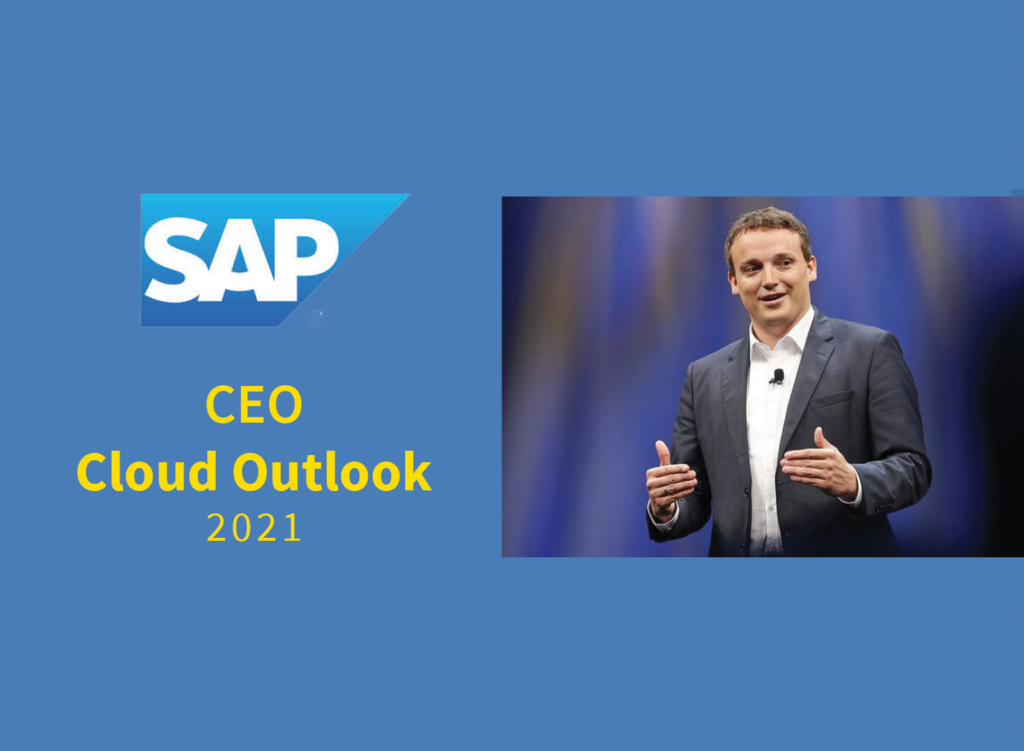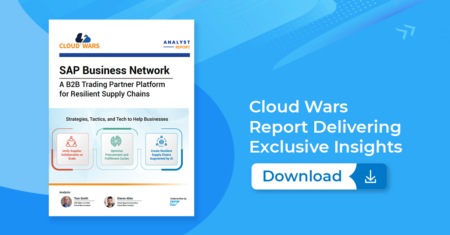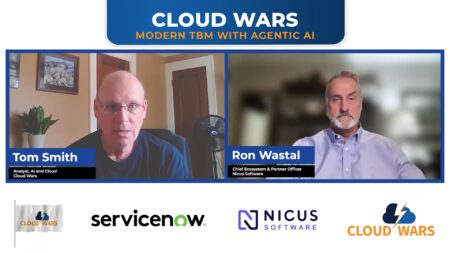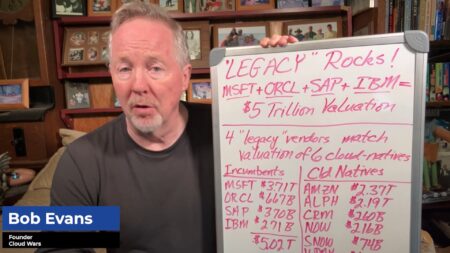Last year, BMW CEO Oliver Zipse foretold the future of SAP—and it was all about wildly reimagined business models, co-innovation with customers, and modern vertical-industry solutions.
And data.
Lots and lots of data.
“He said, ‘Christian, you are sitting on such a big treasure—you have all the data on BMW from all of our suppliers!’ ” said SAP CEO Christian Klein in recalling the conversation with BMW CEO Zipse.
Tipping point
That anecdote captures the incredibly important tipping point at which SAP finds itself here in early 2021:
- while it is still the world’s leading supplier of ERP systems that run massive swaths of the global economy, ERP has become essential but not sufficient for the customer-centric world of digital business;
- corporate CEOs have begun looking to SAP to not only automate and streamline the present but indeed to help them reimagine and recreate the future;
- the tumultuous global economy, and the need for businesses to be able to move in lockstep with their customers, is forging unprecedented changes in how huge industrial value chains work; and
- amid all that upheaval, CEOs are discovering that the data cranked our 24/7 by those hundreds of thousands of SAP ERP systems around the world is rapidly becoming some of the most valuable—and most transformative—raw material on Earth.
(SAP is #5 on my weekly Cloud Wars Top 10 rankings, and you can get the full story on the company in an in-depth analysis we published last month called SAP’s Huge Bet on Industry Cloud Could Be Game-Changer Against Oracle, Salesforce.)
Klein shared that momentous conversation during a Zoom call we had in late December as part of Cloud Wars’ ongoing CEO Cloud Outlook 2021 series (links to more installments in that series are at the end of this article).
Sitting on a gold mine
And Zipse’s comment about the gold mine on which SAP is perched frames perfectly not only the massive opportunity within SAP’s reach but also the additional work the company needs to achieve to turn that potential into a reality.
Here’s how Klein described the speed at which this very large and complex “business network” came together—and how what is now a collaborative effort among German companies in a single industry could become a global model across multiple industries.
“This [BMW] meeting was in June and then we played a little bit the digital connector in the middle,” Klein said on our December Zoom call.
Siemens, Bosch, ZF ‘all in’
“So I reached out to Siemens, I reached out to other automotive suppliers like ZF, like Bosch, and they were all in. They got the use cases, they saw that that’s a win-win.
“Then we also put it in the context of GAIA-X [the Euro-centric data infrastructure project], because this is highly sensitive data. They don’t want to share everything, but they will share certain data,” Klein said, adding that the German government enthusiastically supported the initiative.
“So we are really now looking forward to 2021 to make that work. And by the way, that will not stay a German thing—we are already in discussion with the European Union. There are a lot of suppliers who now want to join the party, and ultimately I really hope we can build a global network.
Extend to other industries
“And then, why not replicate that to other industries?”
In a September blog post about the automotive alliance, Klein described the massive changes this effort will precipitate:
The automotive industry is racing into a new world of mobility even as it continues with the traditional business model of designing, manufacturing, selling, servicing, and financing cars. Megatrends — including connectivity, autonomous driving, shared mobility, and electrification — are shaping the industry and the world of mobility in real time.
We see rigid automotive assembly lines turning into flexible, highly automated modular manufacturing. Logistics is moving from point-to-point communication to network-based original equipment manufacturer (OEM) and supplier collaboration, and business models are changing from classical direct vehicle sales to subscription-based or pay-per-use models.
And so the ramifications of the digital revolution are clear: even as current products continue to be conceived and built, a parallel world of new ideas, new partnerships, new data exchanges, new approaches, new business models, new manufacturing capabilities, new levels of personalization, and new revenue models is arising alongside the old.
Wildly different environment
In this wildly different new environment, it’s inconceivable that the enterprise applications of the past could keep up with these strikingly fluid, fast-changing and data-driven requirements.
For SAP, that means two things must occur in parallel to mirror the changes outlined above from Klein’s blog post:
- SAP must continue to enhance its S/4HANA suite of solutions and complete its ongoing work on a digital platform with a single data model orchestrating all of SAP’s applications and related technologies; and,
- simultaneously, SAP must unleash new industry-specific solutions that not only interconnect seamlessly with those LOB apps but that also make it easy and appealing and highly productive for customers to co-innovate with SAP.
“Today a lot of enterprises have never digitized their supply chain,” Klein said. “They never digitized their data streams also towards the consumer.

Executing in real time
“And now with the network, you realize this has completely changed the game because now you can manage all of these dependencies real time. You can get better outcomes with regard to productivity, and lower costs.”
As a result, businesses gain the ability to accelerate their operations and get closer to the breakthrough point of being able to move at the speed of their customers.
“So that is game-changing. Because today, you’re often running your enterprise in a very process-by-process, one-step-by-one-step way, but suddenly you can really be managing the company real time.”
And not just in real time, although that is extremely important—but also with the full and active co-innovation participation of three indispensable parties: customers, partners, and AI.
“With one large U.S. retailer, we are helping them manage demand and supply to optimize the inventory so that he doesn’t have so much excess fresh vegetables because we can immediately predict, ‘How will the demand change?’ And then of course hopefully optimize the supply in each store to always have an ideal distribution and also lower the inventory cost.
Massive impact of AI
“And this is all AI. In all of our applications we infuse AI because 10 years back, we would code that as well. But that would be all around transactional processes with a lot of feelings, like some humans chatting about what they think will or might be happening on the demand side,” Klein said.
“But now there is so much intelligence in these processes to personalize the experiences, to optimize the supply and the inventory.
“This is something that we really have to do with our customers together. I love our product management teams and they are very innovative but the best way to make sure we are really hitting the demands of the industry and of our customers is really being out there and doing it together.”
Doing it together, no doubt, but also doing it at a pace that only 2 or 3 years ago would have been unfathomable at SAP.
“We are investing a ton of money now in our digital marketplace, which is the layer on our platform where we can actually onboard partners or developers or startups in about 2 days,” Klein said.
“Then they can be developing on our platform in as little as 2 weeks. Then they can put it in the app store where we already have a predefined revenue-sharing model.”
The need for speed
On that same subject of accelerated operations, opportunities, and innovation, Klein cited the recent releases of vaccines for the COVID pandemic.
“In 95% of the cases, our software helped make the vaccine,” Klein said.
“SAP is running the companies who are doing production, who are doing distribution, who are actually supplying the big manufacturing companies with regard to the vaccine.
“But if we would do that in a business network for the pharma industry, I’m pretty sure we could even further accelerate the production and the distribution of the vaccine.
“And this is where we don’t want to stop. Yes, we are deeply involved today, we are doing the things that need to be done and we find ways to make that all work even in times of COVID, but I want to have SAP go one step further and really also manage that in real time.
“So we are also changing so that these companies can now go forward in a network, and not in isolation, with each company on its own.”
Culture changes
That’s a tall order for any company, and one that will surely require—and is already requiring—significant changes in the corporate culture that has served SAP so well for almost 5 decades.
Klein has been at SAP for about 20 years—and yes, he did start there in his student days—and understands deeply that the culture that got SAP here will not take it where it needs to go in the digital world.
“We’ve made culture a really strong focus,” Klein said. “At the beginning of 2020, we did a big reorg. We actually said that we want to harmonize our development function. We want to harmonize our technology and our go-to market so they are more ‘one SAP’ without losing the special focus on certain LOB’s.”
And perhaps the biggest cultural change of all: “We need to make it easier for our customers to do business with SAP,” Klein said.
“It’s not only on the product side—we also need to change the culture on the go-to market side. We need to change certain processes around introducing new business models. For instance, we now have ‘pay as you go’ for the platform, which means you have to have a completely different selling motion,” he said.
“In some cases, we suddenly have architects in sales roles, and they drive creation of new apps on the platform with our customers and with our partners.
“We never did anything like that. It’s a change and we are now in the middle of that.”
How’s SAP doing with all that change?
Well, in the eyes of one prominent observer, Klein and SAP are making great progress.
Satya Nadella’s perspective
Referring to Microsoft CEO Satya Nadella, Klein said, “I had a talk with Satya and he said, ‘Christian, what’s happening now at SAP feels a little bit like the change we had with Office 365 to Teams.’ And he said that was also an inflection point for Microsoft.
“So now that we’re getting our acts together on the platform side for our applications and then for the ecosystem,” Klein said, “I really feel it’s similar.”
News update: Just a few hours before this story was scheduled to go live, SAP released preliminary Q4 financial results, with the strong report boosting SAP’s stock 3.2% in after-hours trading.
RECOMMENDED READING
How Microsoft Plans to Stay #1 in Cloud: Exclusive Interview with Exec VP Scott Guthrie
Workday’s Aneel Bhusri Unplugged: Riffs on Employee Well-Being, UIs, and Rise of the Corporate Soul
Bill McDermott Exclusive Interview: ServiceNow Will Lap Legacy ‘Cement Makers’
Can Oracle Beat AWS and Snowflake in the Cloud Database Wars?
Inside Snowflake: the Phenomenal Growth Number Driving All the Hype
SAP, Google, Oracle Battle over Industry-Specific Solutions: 5 Predictions
Google Cloud Jumps to #3 on Cloud Wars Top 10; Trails only #1 Microsoft, #2 Amazon
The Top 10 Challenges for the Cloud Industry in 2021
Cloud Wars Top 10 Special Report: Which Cloud Vendors Will Thrive in 2021?
Subscribe to the Cloud Wars Newsletter for in-depth analysis of the major cloud vendors from the perspective of business customers. It’s free, it’s exclusive and it’s great!







